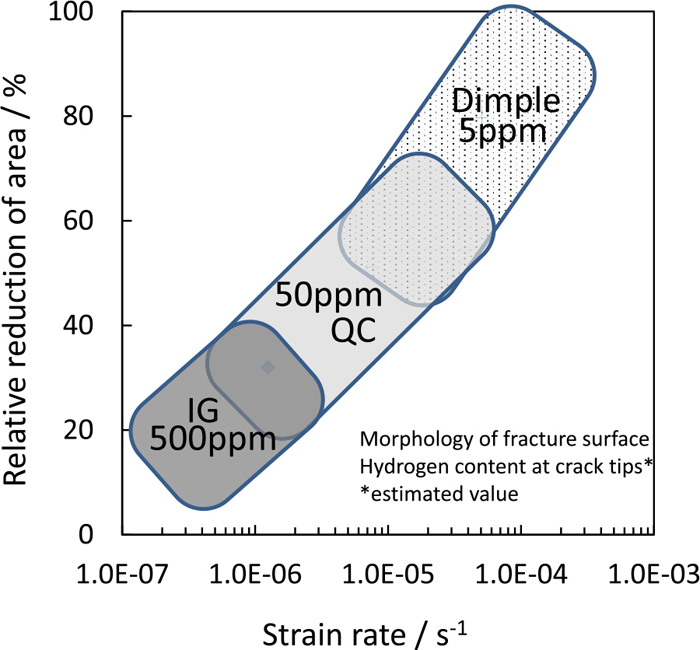Volume 59, Issue 2
Displaying 1-27 of 27 articles from this issue
- |<
- <
- 1
- >
- >|
Publication Data
-
2019 Volume 59 Issue 2 Pages Cover-
Published: February 15, 2019
Released on J-STAGE: February 23, 2019
Download PDF (431K) -
2019 Volume 59 Issue 2 Pages Editorial-
Published: February 15, 2019
Released on J-STAGE: February 23, 2019
Download PDF (1484K) -
2019 Volume 59 Issue 2 Pages Contents-
Published: February 15, 2019
Released on J-STAGE: February 23, 2019
Download PDF (586K)
Regular Articles
Fundamentals of High Temperature Processes
-
Article type: Regular Article
2019 Volume 59 Issue 2 Pages 209-215
Published: February 15, 2019
Released on J-STAGE: February 23, 2019
Download PDF (912K) Full view HTML -
Article type: Regular Article
2019 Volume 59 Issue 2 Pages 216-220
Published: February 15, 2019
Released on J-STAGE: February 23, 2019
Download PDF (1090K) Full view HTML -
Molecular Dynamics Simulation of Carbon Effect on the Thermal Physical Properties of the Molten IronArticle type: Regular Article
2019 Volume 59 Issue 2 Pages 221-226
Published: February 15, 2019
Released on J-STAGE: February 23, 2019
Advance online publication: November 20, 2018Download PDF (703K) Full view HTML -
Article type: Regular Article
2019 Volume 59 Issue 2 Pages 227-234
Published: February 15, 2019
Released on J-STAGE: February 23, 2019
Advance online publication: December 13, 2018Download PDF (2846K) Full view HTML
Ironmaking
-
Article type: Regular Article
2019 Volume 59 Issue 2 Pages 235-244
Published: February 15, 2019
Released on J-STAGE: February 23, 2019
Download PDF (3985K) Full view HTML -
Article type: Regular Article
2019 Volume 59 Issue 2 Pages 245-252
Published: February 15, 2019
Released on J-STAGE: February 23, 2019
Advance online publication: December 05, 2018Download PDF (1742K) Full view HTML -
Article type: Regular Article
2019 Volume 59 Issue 2 Pages 253-262
Published: February 15, 2019
Released on J-STAGE: February 23, 2019
Advance online publication: December 05, 2018Download PDF (2238K) Full view HTML -
Article type: Regular Article
2019 Volume 59 Issue 2 Pages 263-267
Published: February 15, 2019
Released on J-STAGE: February 23, 2019
Download PDF (2449K) Full view HTML
Steelmaking
-
Article type: Regular Article
2019 Volume 59 Issue 2 Pages 268-276
Published: February 15, 2019
Released on J-STAGE: February 23, 2019
Advance online publication: November 16, 2018Download PDF (2997K) Full view HTML
Casting and Solidification
-
Article type: Regular Article
2019 Volume 59 Issue 2 Pages 277-282
Published: February 15, 2019
Released on J-STAGE: February 23, 2019
Download PDF (552K) Full view HTML -
Article type: Regular Article
2019 Volume 59 Issue 2 Pages 283-292
Published: February 15, 2019
Released on J-STAGE: February 23, 2019
Advance online publication: November 20, 2018Download PDF (8509K) Full view HTML
Instrumentation, Control and System Engineering
-
Article type: Regular Article
2019 Volume 59 Issue 2 Pages 293-299
Published: February 15, 2019
Released on J-STAGE: February 23, 2019
Download PDF (1576K) Full view HTML
Welding and Joining
-
Article type: Regular Article
2019 Volume 59 Issue 2 Pages 300-304
Published: February 15, 2019
Released on J-STAGE: February 23, 2019
Advance online publication: November 20, 2018Download PDF (1325K) Full view HTML -
Article type: Regular Article
2019 Volume 59 Issue 2 Pages 305-311
Published: February 15, 2019
Released on J-STAGE: February 23, 2019
Download PDF (2686K) Full view HTML -
Article type: Regular Article
2019 Volume 59 Issue 2 Pages 312-318
Published: February 15, 2019
Released on J-STAGE: February 23, 2019
Advance online publication: November 20, 2018Download PDF (1274K) Full view HTML
Surface Treatment and Corrosion
-
Article type: Regular Article
2019 Volume 59 Issue 2 Pages 319-325
Published: February 15, 2019
Released on J-STAGE: February 23, 2019
Advance online publication: December 01, 2018Download PDF (1828K) Full view HTML -
Article type: Regular Article
2019 Volume 59 Issue 2 Pages 326-335
Published: February 15, 2019
Released on J-STAGE: February 23, 2019
Advance online publication: November 30, 2018Download PDF (2377K) Full view HTML -
Article type: Regular Article
2019 Volume 59 Issue 2 Pages 336-344
Published: February 15, 2019
Released on J-STAGE: February 23, 2019
Download PDF (6139K) Full view HTML -
Article type: Regular Article
2019 Volume 59 Issue 2 Pages 345-350
Published: February 15, 2019
Released on J-STAGE: February 23, 2019
Advance online publication: November 16, 2018Download PDF (3136K) Full view HTML
Transformations and Microstructures
-
Article type: Regular Article
2019 Volume 59 Issue 2 Pages 351-358
Published: February 15, 2019
Released on J-STAGE: February 23, 2019
Download PDF (2914K) Full view HTML
Mechanical Properties
-
Article type: Regular Article
2019 Volume 59 Issue 2 Pages 359-366
Published: February 15, 2019
Released on J-STAGE: February 23, 2019
Advance online publication: November 20, 2018Download PDF (4643K) Full view HTML
Physical Properties
-
Article type: Regular Article
2019 Volume 59 Issue 2 Pages 367-374
Published: February 15, 2019
Released on J-STAGE: February 23, 2019
Download PDF (1299K) Full view HTML
Social and Environmental Engineering
-
Article type: Regular Article
2019 Volume 59 Issue 2 Pages 375-380
Published: February 15, 2019
Released on J-STAGE: February 23, 2019
Download PDF (1229K) Full view HTML -
Article type: Regular Article
2019 Volume 59 Issue 2 Pages 381-390
Published: February 15, 2019
Released on J-STAGE: February 23, 2019
Advance online publication: November 20, 2018Download PDF (1331K) Full view HTML
- |<
- <
- 1
- >
- >|







